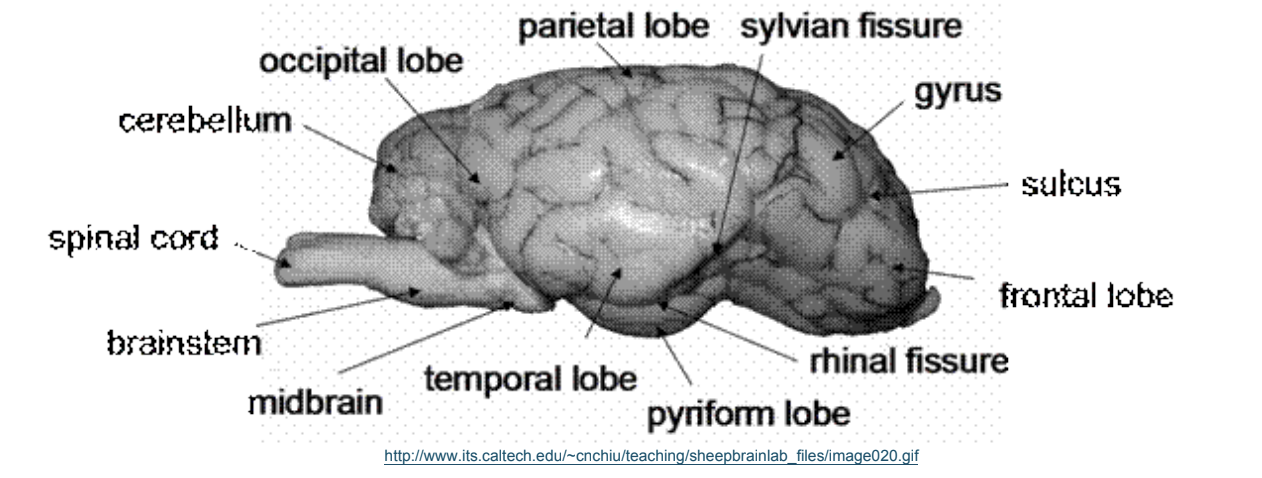SG: Organization of the Nervous System
4.3(4)
4.3(4)
Card Sorting
1/36
Earn XP
Description and Tags
Study Analytics
Name | Mastery | Learn | Test | Matching | Spaced |
|---|
No study sessions yet.
37 Terms
1
New cards
Stimuli means
Change
2
New cards
The two types of nervous system
CNS and PNS
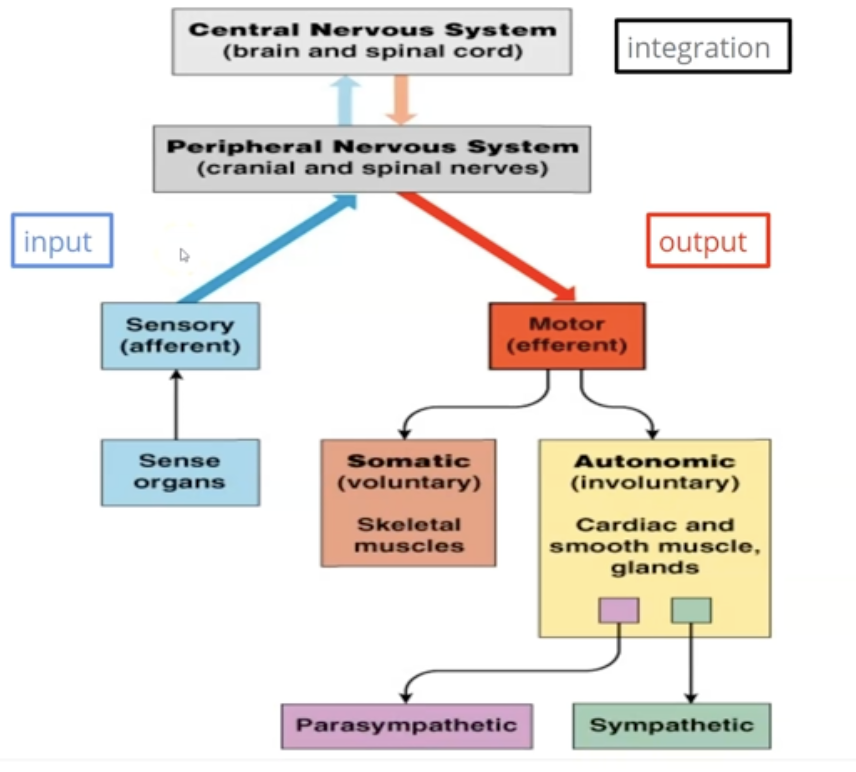
3
New cards
What does CNS consist of?
Brain and Spinal Cord
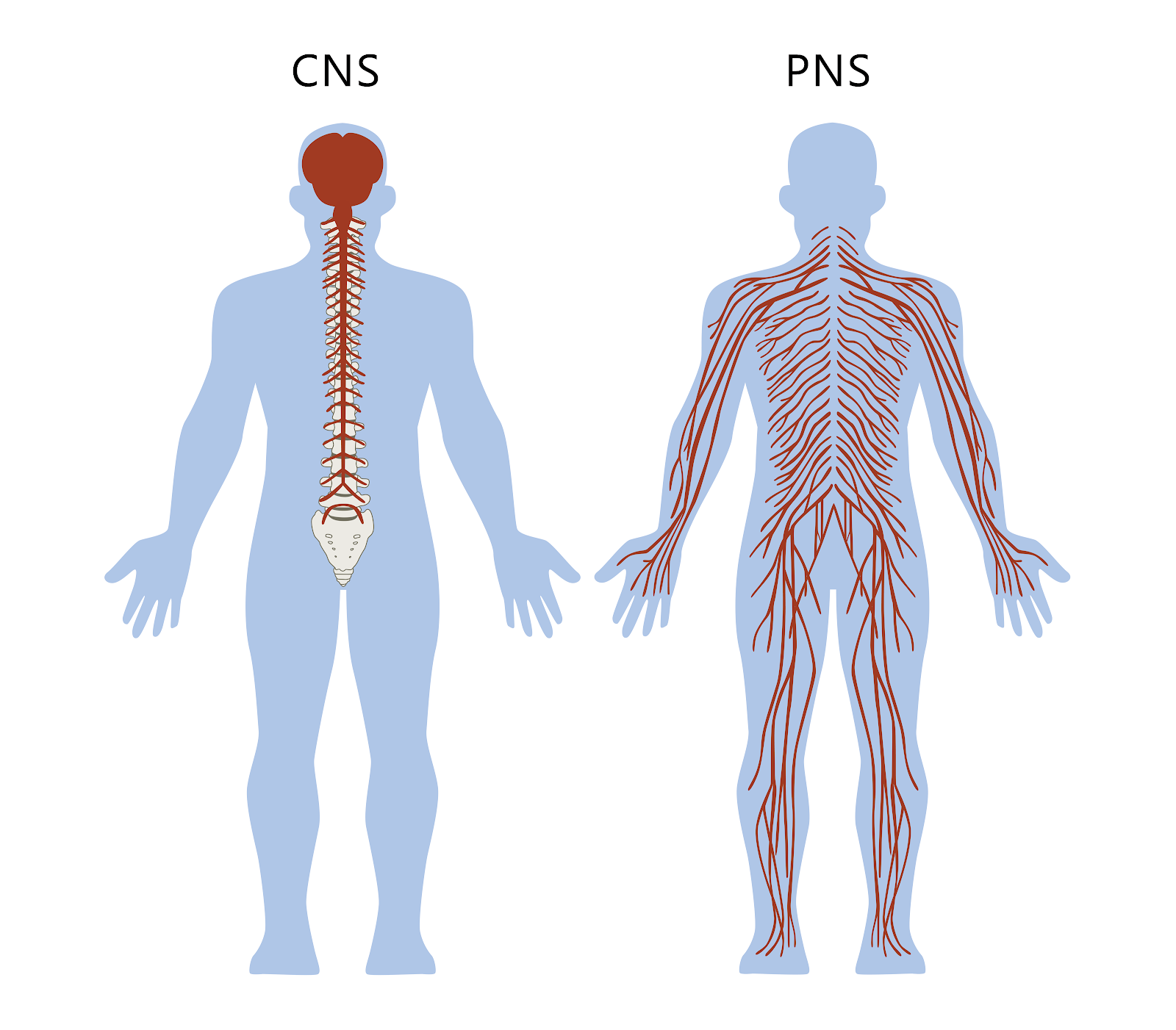
4
New cards
What is PNS?
Nerves outside the brain and spinal cord.
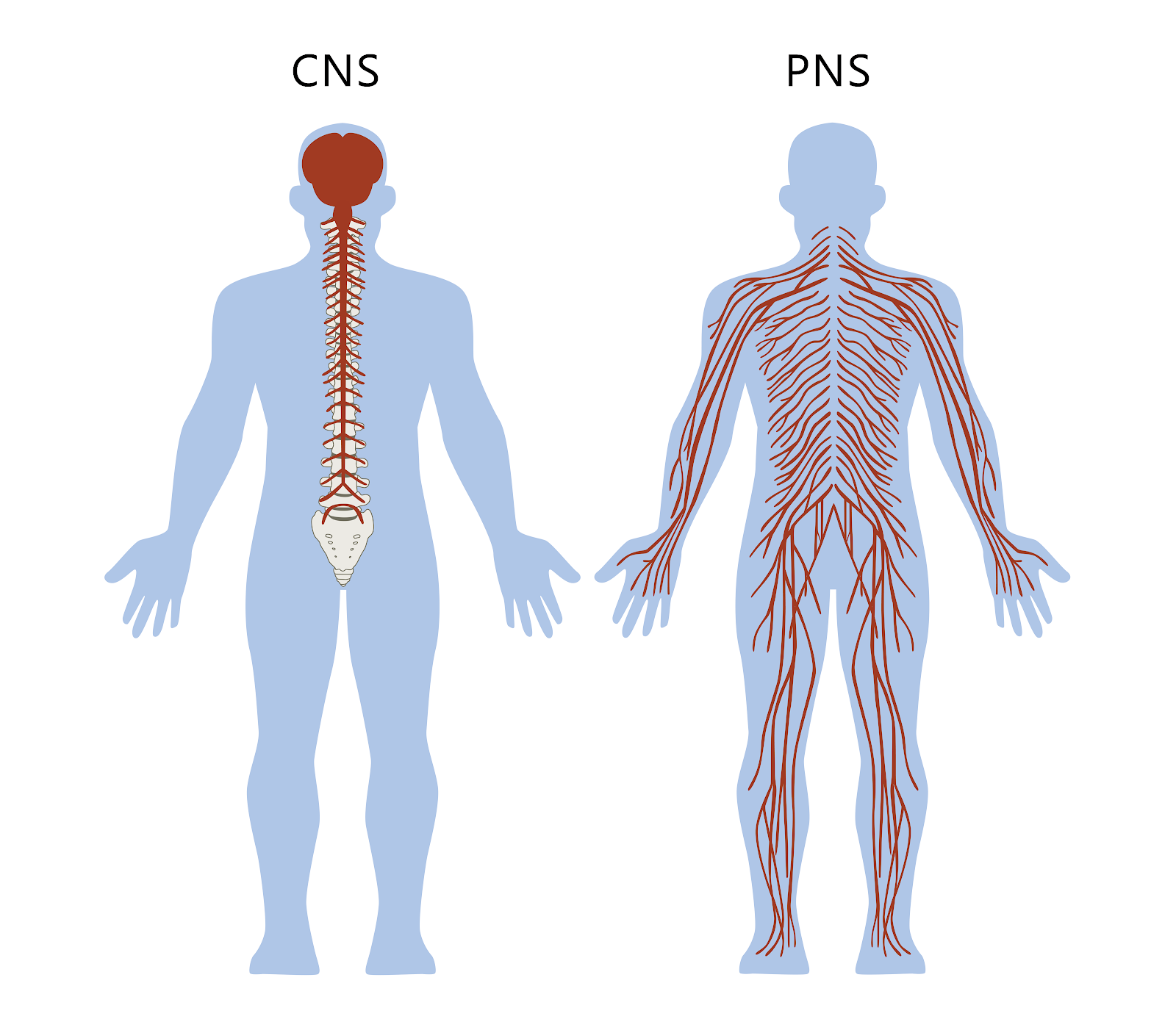
5
New cards
PNS is dividend into two branches. Name them.
Sensory (afferent) division and Motor (efferent) division
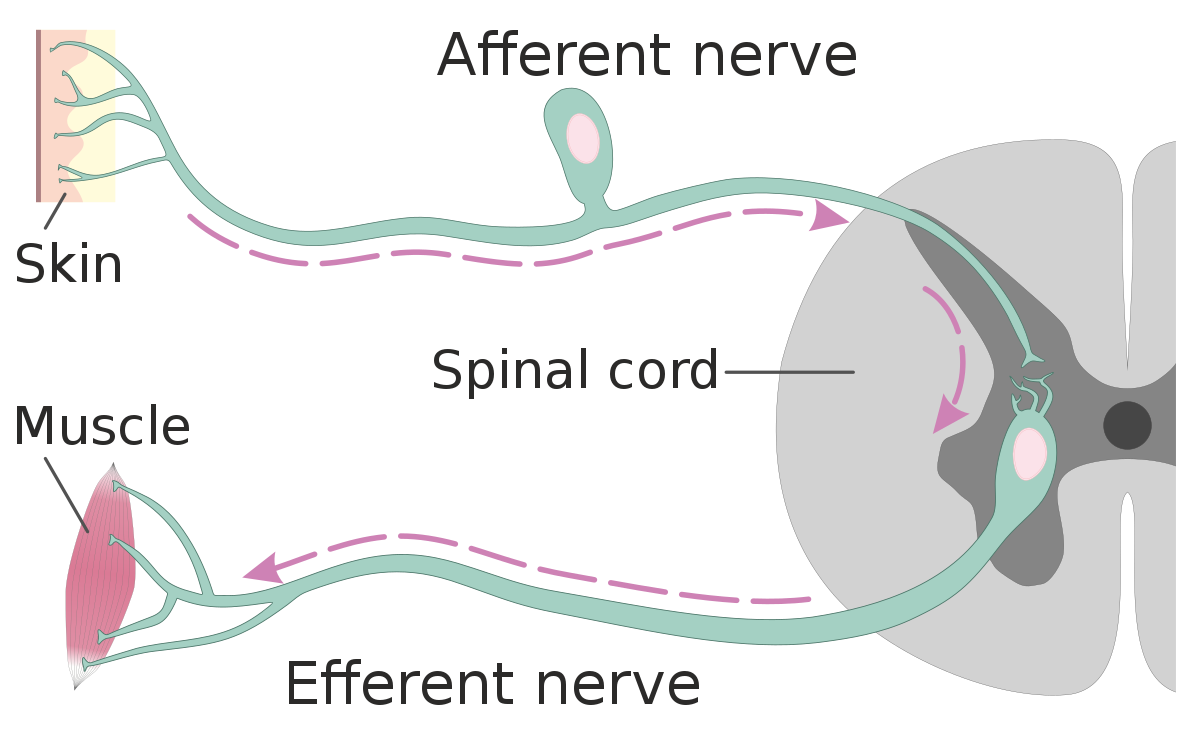
6
New cards
Senosory (afferent) division
Conveys impulses to the CNS. (Think of sense organs, they convey info to the brain)
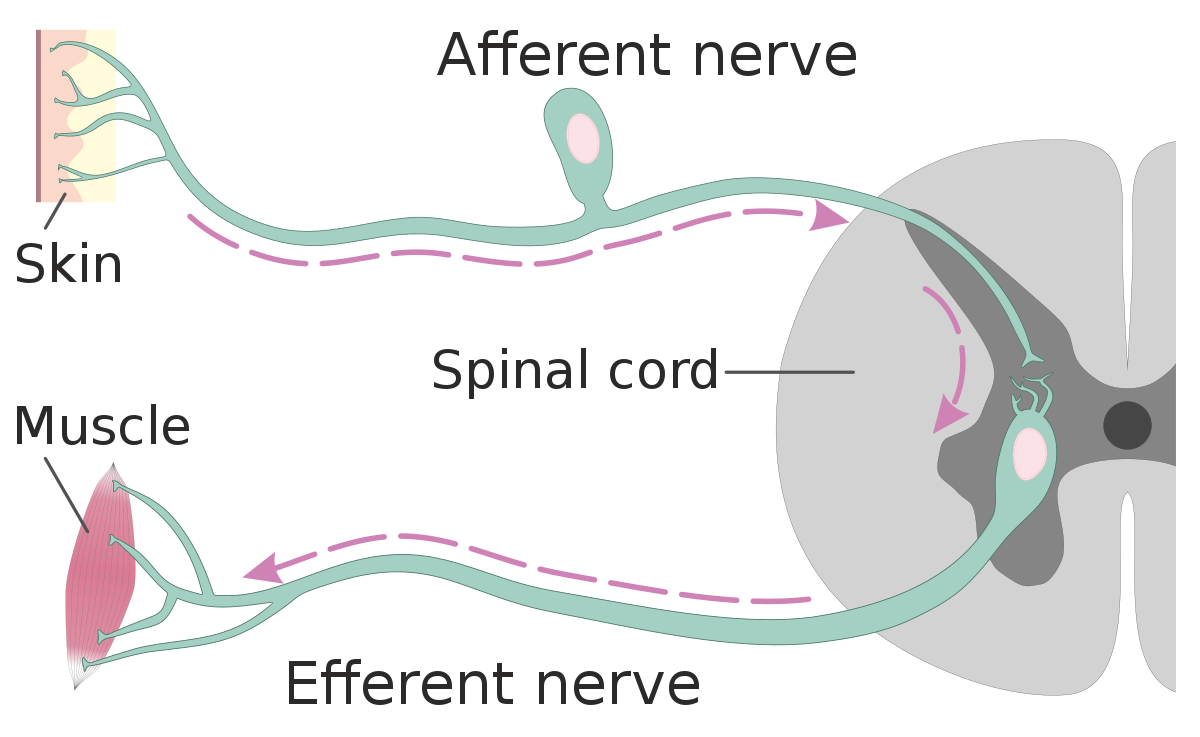
7
New cards
Sensory (afferent) division is divided into two more parts. Name them.
Somatic sensory fibers and Visceral Sensory fibers

8
New cards
Somatic sensory fibers
Deliver impulses from the skin, skeletal muscle, and joints. (starts with S, so think of skin and bones)
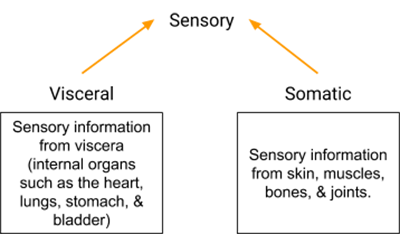
9
New cards
Visceral Sensory fibers
Deliver impulses from visceral (internal) organs. (Remember using visceral = internal organs)
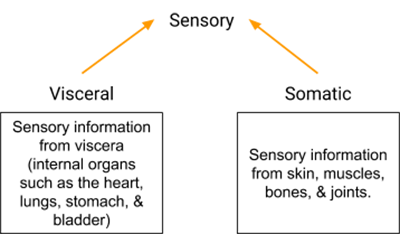
10
New cards
Motor (efferent) division is divided into 2 parts. Name them
Somatic (voluntary) nervous system and Autonomic (involuntary) nervous system.

11
New cards
Somatic (voluntary) nervous system
Allows conscious or voluntary control of skeletal muscles. (DO NOT CONFUSE WITH SOMATIC SENSORY FIBERS)
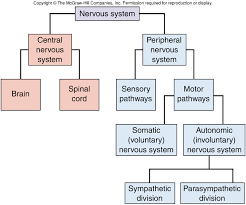
12
New cards
Autonomic (involuntary) nervous system.
regulates events that are automatic or involuntary. (remember, it has auto in the beginning so it controls automatic responses)
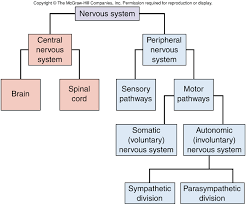
13
New cards
Autonomic (involuntary) nervous system can further be divided into
Sympathetic and Parasympathetic

14
New cards
Sympathetic
Fight or flight. (think of when you are sympathetic towards climate change, you want to fight back)
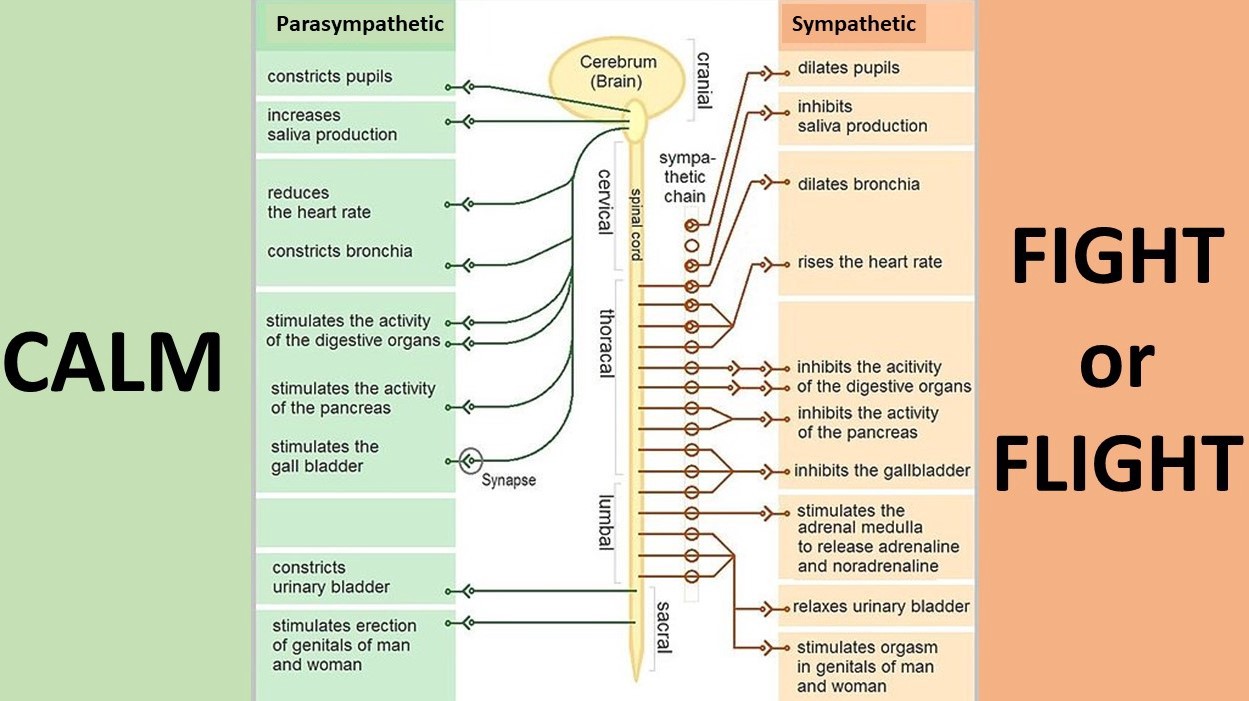
15
New cards
Parasympathetic
Rest and digest. (think of para as half sympathetic, when you have half of it, you sleep to gain more of it, so para is something with rest)
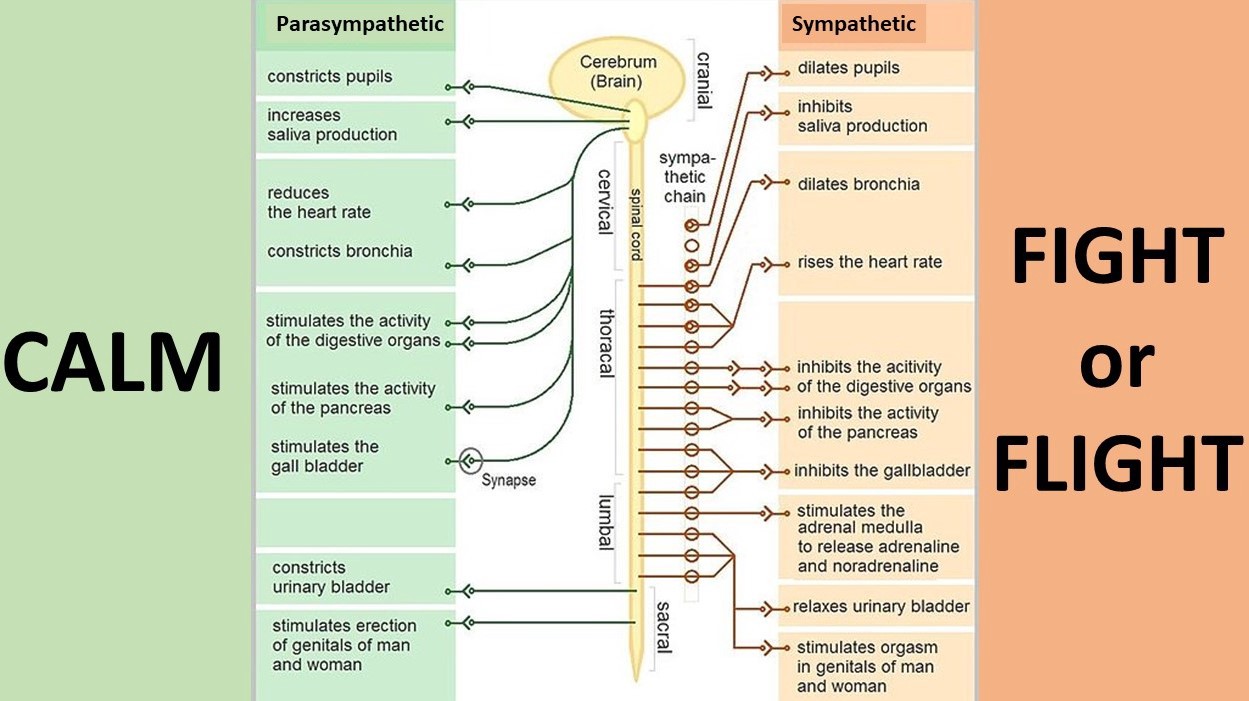
16
New cards
Top most organ of the CNS
Brain
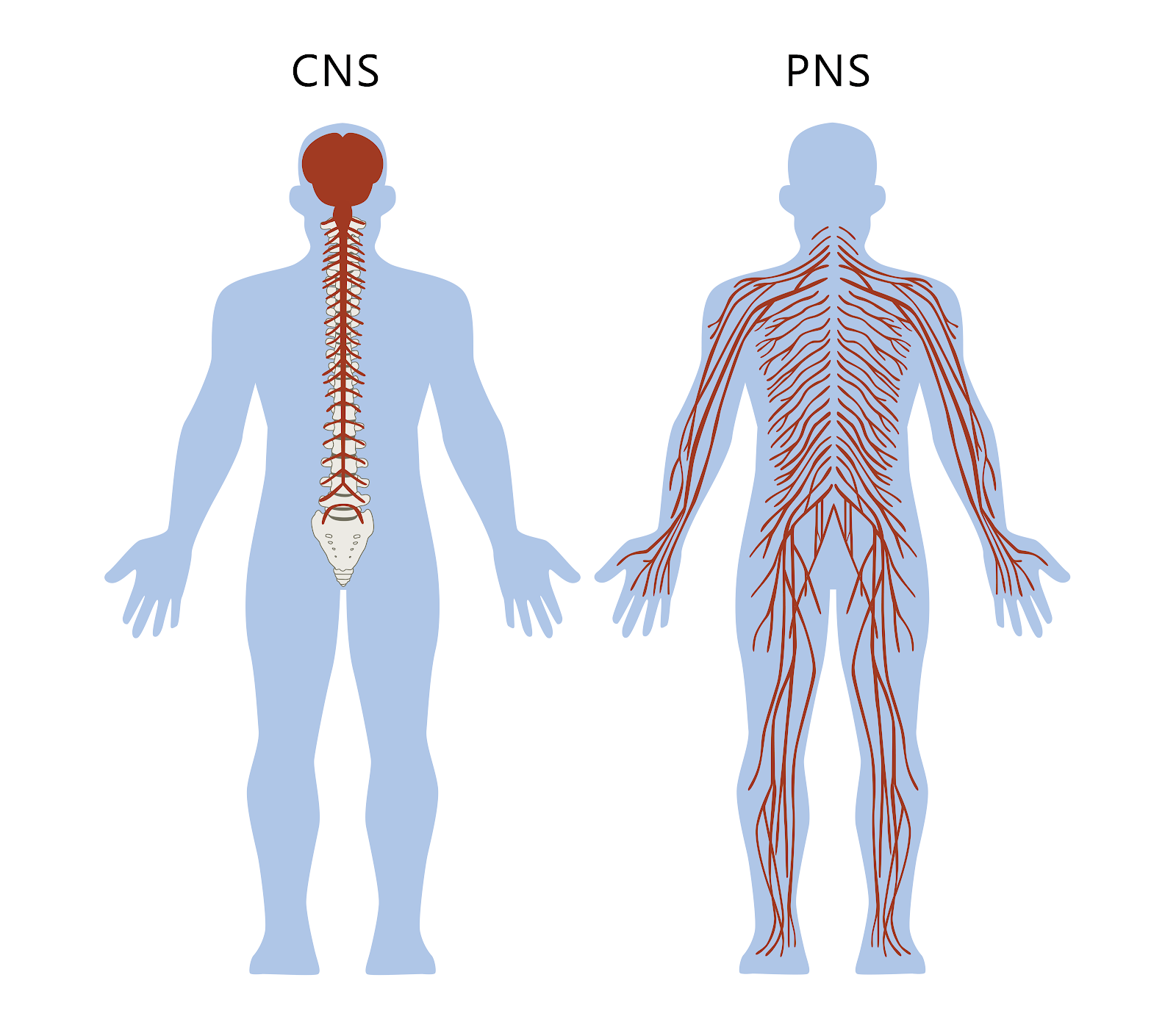
17
New cards
Brain is divided into 4 parts. Name them
Cerebrum, Diencephalon, Brain Stem and Cerebellum.
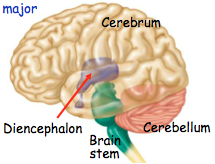
18
New cards
Cerebrum
Brum = Drum. Huge and Makes up most of the brain.
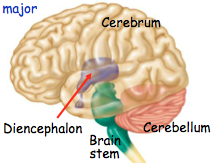
19
New cards
Gyri
Ridges. (Think of GRI (kinda like MRI). Gyri, ridges, inside part,)
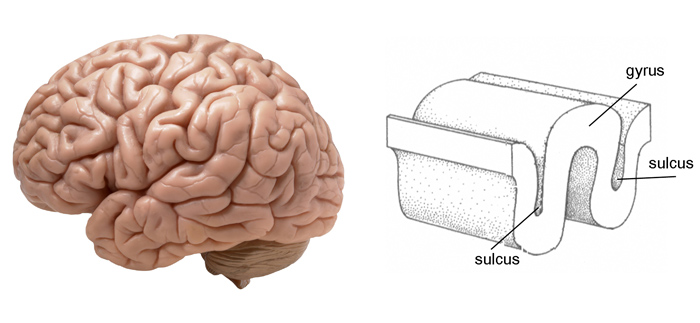
20
New cards
Sulci
Grooves (Remember using SGO (kinda like NGO): Sulci, Grooves, outside)
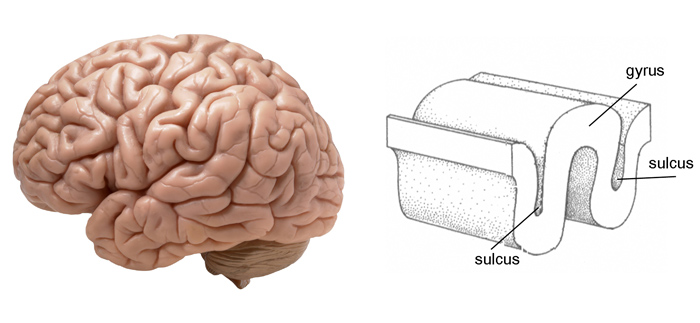
21
New cards
4 parts of Cebrum
Frontal Lobe, Pariental Lobe, Occipital Lobe and Temporal Lobe
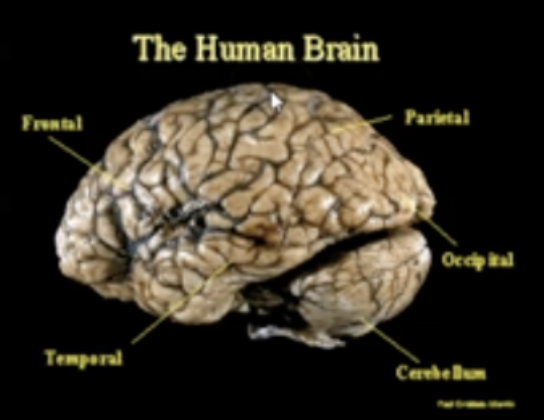
22
New cards
Frontal Lobe manages
Decision-making (Think of Front part, manages decisions)
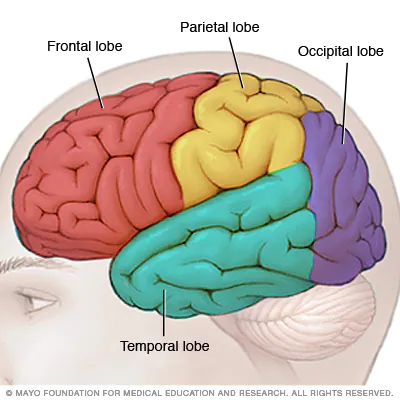
23
New cards
Parietal Lobe
Touch (think of parent's touch)
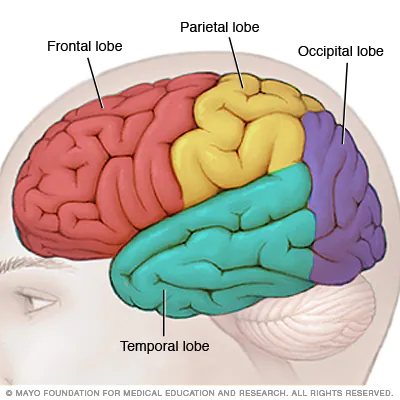
24
New cards
Occipital Lobe
Vision (Think of occupation. Remember using Occupation = vision)
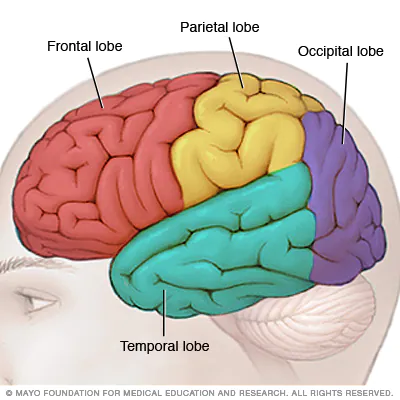
25
New cards
Temporal Lobe
Smell and Hearing (Temples are located top of your ears, so thus remember that they mange hearing and smell)
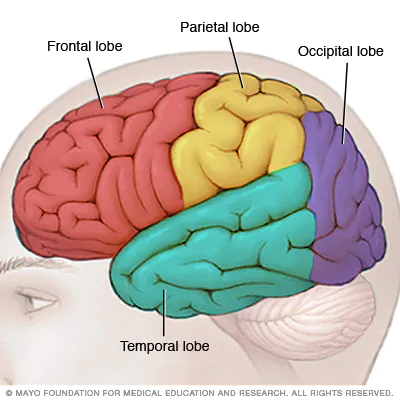
26
New cards
Two Specialized regions of Cerebrum
- Somatic sensory area: Receives impulses from the body’s sensory receptors (except special senses)
- Primary motor area: Sends impulses to skeletal muscles
- Primary motor area: Sends impulses to skeletal muscles
27
New cards
Which part of the brain is located on top of brain stem?
Diencephalon
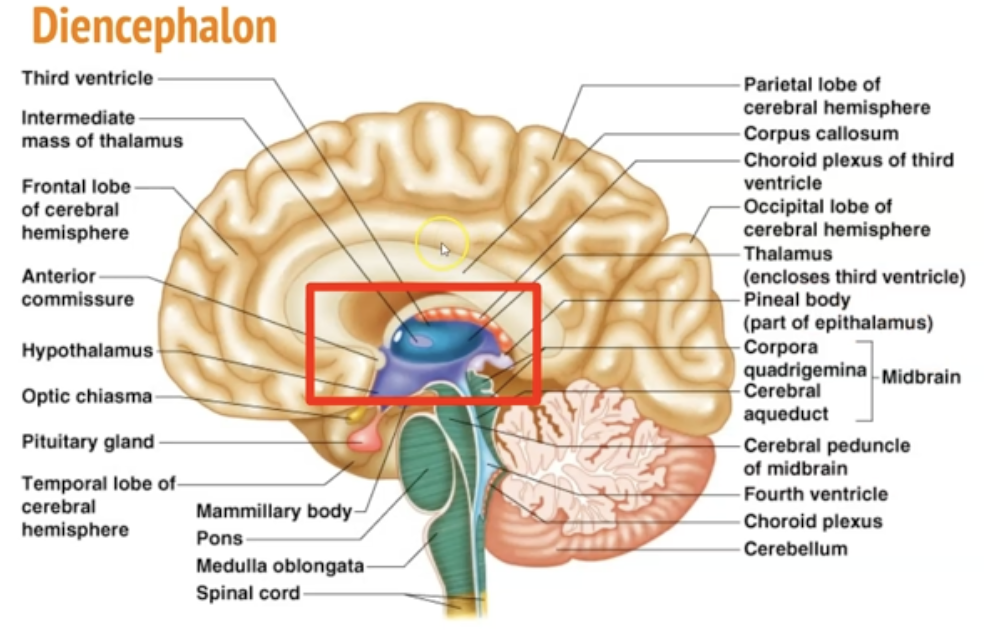
28
New cards
3 parts of Diencephalon
Thalamus, Hypothalamus and Epithalamus.
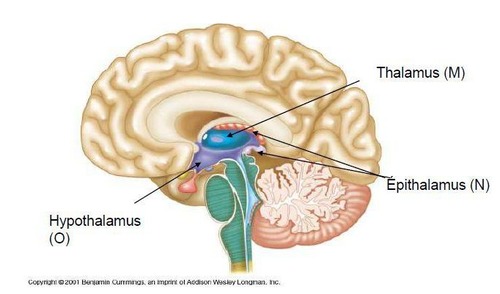
29
New cards
Thalamus
Relay station for sensory impulses (taste, sight, hearing, equilibrium) except for olfactory neurons (sense of smell).
(REMEMBER: T [halamus] = T [taste]. From that, just remember it's senses)
(REMEMBER: T [halamus] = T [taste]. From that, just remember it's senses)
![Relay station for sensory impulses (taste, sight, hearing, equilibrium) except for olfactory neurons (sense of smell).
(REMEMBER: T [halamus] = T [taste]. From that, just remember it's senses)](https://knowt-user-attachments.s3.amazonaws.com/0536b48bc8904abfb41396442cba6cd1.jpeg)
30
New cards
Hypothalamus
Homeostasis (Body temperature and metabolism). (REMEBER: H = H, so hypothalamus = homestatis)
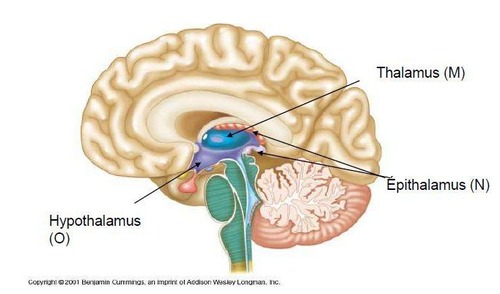
31
New cards
Hippocampus
Part of the Hypothalamus. Known for learning and motivation. (Think of hippo (from the hypotonic thing) = learning (something new))
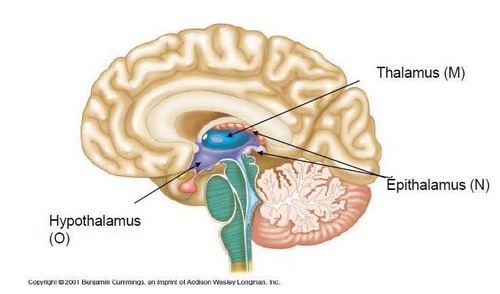
32
New cards
Hippocampus is part of ____
Hypothalamus (Think of hypotonic = hippo from the cell tonicity thingy)
33
New cards
Which part of the brain is very close to the Spinal Cord?
Brain Stem (Think of like a stem of a plant, just rooting itself from spinal cord)

34
New cards
Midbrain
Reflex centers for vision and hearing. (DONOT CONFUSE, Midbrain is located in the middle of BRAIN NOT BRAIN STEM, it's actually located in the top of Brain Stem)
(REMEMBER: Think of the brain stem like your face. Mid brain is located at the top most part, so the topmost part of your face is eyes and ears. So it manages vision and hearing)
(REMEMBER: Think of the brain stem like your face. Mid brain is located at the top most part, so the topmost part of your face is eyes and ears. So it manages vision and hearing)
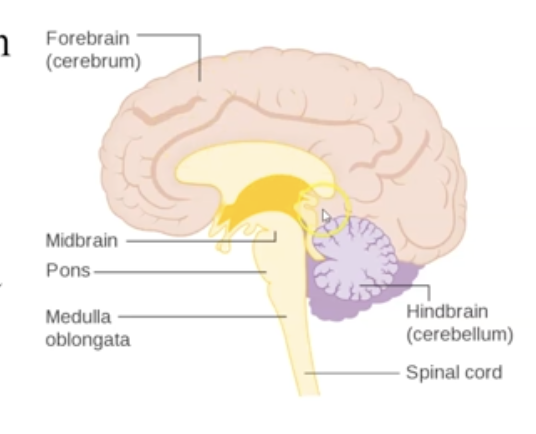
35
New cards
Pons
Bulging center part of the brain stem. It manages Sleep. (Pons = ponds. ponds is a makeup company. So just remember that you put on your face makeup mask at night before you sleep)
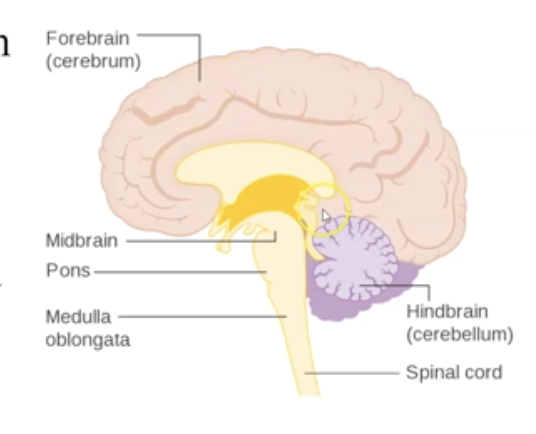
36
New cards
Medulla oblongata
The lowest part of the brain stem. Manages:
- Heart rate control
- Blood pressure regulation
- Breathing
- Vomiting
- Swallowing
REMEMBER all functions Using the acronym M=HBBSV (Mother = Help Baby Breathe by Vomitting Syrup)
- Heart rate control
- Blood pressure regulation
- Breathing
- Vomiting
- Swallowing
REMEMBER all functions Using the acronym M=HBBSV (Mother = Help Baby Breathe by Vomitting Syrup)
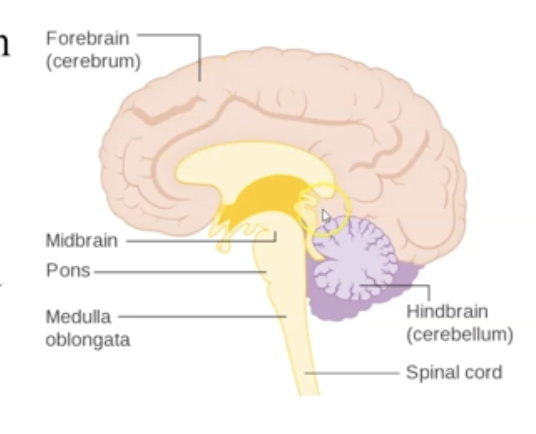
37
New cards
Cerebellum
Provides coordination of body movements to maintain balance coordination and posture. (Remember using: bellum = bella = balance)
